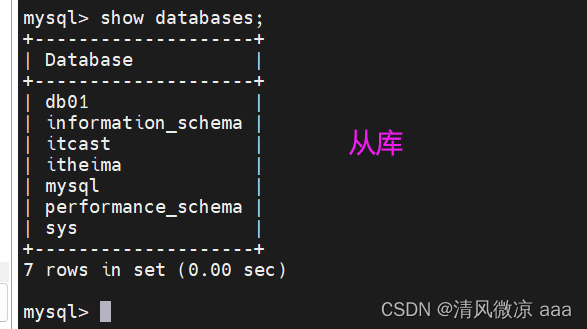note
- 构建教程编写智能体
文章目录
- note
- 一、功能需求
- 二、相关代码
- (1)定义生成教程的目录 Action 类
- (2)定义生成教程内容的 Action 类
- (3)定义教程编写智能体
- (4)交互式操作调用教程编写智能体
- 三、Python小细节
- Reference
一、功能需求
功能:输入教程主题,然后自动生成完整的教程内容
思路:先通过 LLM 大模型生成教程的目录,再对目录按照二级标题进行分块,对于每块目录按照标题生成详细内容,最后再将标题和内容进行拼接。分块的设计解决了 LLM 大模型长文本的限制问题。
二、相关代码
(1)定义生成教程的目录 Action 类
定义 WriteDirectoryAction 类,继承自 BaseAction。该类的主要功能是生成一个教程的目录结构。具体来说,它通过调用大语言模型(LLM)来根据给定的主题和语言生成一个符合特定格式的目录。
(2)定义生成教程内容的 Action 类
WriteContentAction 类用于生成教程内容。它的 __call__ 方法接收标题、章节、语言和目录数据,并构建一个内容提示,最后调用 LLM 生成相应的内容。
(3)定义教程编写智能体
定义 TutorialAssistant 类,继承自 BaseAgent,用于生成教程内容。其主要功能包括:
- 初始化目录和内容生成的动作(
WriteDirectoryAction和WriteContentAction) _generate_tutorial方法根据目录数据生成完整的教程内容包括目录和每个章节的详细内容_add_tutorial_example方法为助手添加一个示例任务并展示如何生成一个 Python 教程的目录和内容。最终调用__call__方法处理生成教程的任务。它从任务中提取主题,生成目录结构,然后生成完整的教程内容,并将结果保存到本地。
(4)交互式操作调用教程编写智能体
在主程序中,创建 TutorialAssistant 实例并调用其 __call__ 方法,实现交互式生成教程的功能。用户可以输入要创建的教程主题,然后调用 TutorialAssistant 生成相应的教程内容,并将结果保存到本地文件。
import os
from dotenv import load_dotenv
# 加载环境变量
load_dotenv()
# 初始化变量
base_url = None
chat_model = None
api_key = None
# 使用with语句打开文件,确保文件使用完毕后自动关闭
env_path = ".env.txt"
with open(env_path, 'r') as file:
# 逐行读取文件
for line in file:
# 移除字符串头尾的空白字符(包括'\n')
line = line.strip()
# 检查并解析变量
if "base_url" in line:
base_url = line.split('=', 1)[1].strip().strip('"')
elif "chat_model" in line:
chat_model = line.split('=', 1)[1].strip().strip('"')
elif "ZHIPU_API_KEY" in line:
api_key = line.split('=', 1)[1].strip().strip('"')
elif "BOCHA_API_KEY" in line:
BOCHA_API_KEY = line.split('=', 1)[1].strip().strip('"')
# 打印变量以验证
print(f"base_url: {base_url}")
print(f"chat_model: {chat_model}")
print(f"ZHIPU_API_KEY: {api_key}")
from typing import List, Dict
from zigent.llm.agent_llms import LLM
from zigent.actions import BaseAction, ThinkAct, FinishAct
from zigent.agents import BaseAgent
from zigent.commons import TaskPackage, AgentAct
from zigent.actions.InnerActions import INNER_ACT_KEY
from datetime import datetime
import json
llm = LLM(api_key=api_key, base_url=base_url, model_name=chat_model)
response = llm.run("你是谁?")
print(response)
# 一、定义生成教程的目录 Action 类
class WriteDirectoryAction(BaseAction):
"""Generate tutorial directory structure action"""
def __init__(self) -> None:
action_name = "WriteDirectory"
action_desc = "Generate tutorial directory structure"
params_doc = {
"topic": "(Type: string): The tutorial topic name",
"language": "(Type: string): Output language (default: 'Chinese')"
}
super().__init__(action_name, action_desc, params_doc)
def __call__(self, **kwargs):
topic = kwargs.get("topic", "")
language = kwargs.get("language", "Chinese")
directory_prompt = f"""
请为主题"{topic}"生成教程目录结构,要求:
1. 输出语言必须是{language}
2. 严格按照以下字典格式输出: {{"title": "xxx", "directory": [{{"章节1": ["小节1", "小节2"]}}, {{"章节2": ["小节3", "小节4"]}}]}}
3. 目录层次要合理,包含主目录和子目录
4. 每个目录标题要有实际意义
5. 不要有多余的空格或换行
"""
# 调用 LLM 生成目录
# directory_data = llm.llm_chain.invoke({"prompt": directory_prompt})
directory_data = llm.run(prompt=directory_prompt) # 注意这里传入的是prompt参数
try:
directory_data = json.loads(directory_data)
except:
directory_data = {"title": topic, "directory": []}
return {
"topic": topic,
"language": language,
"directory_data": directory_data
}
# 二、定义生成教程内容的 Action 类
class WriteContentAction(BaseAction):
"""Generate tutorial content action"""
def __init__(self) -> None:
action_name = "WriteContent"
action_desc = "Generate detailed tutorial content based on directory structure"
params_doc = {
"title": "(Type: string): The section title",
"chapter": "(Type: string): The chapter title",
"directory_data": "(Type: dict): The complete directory structure",
"language": "(Type: string): Output language (default: 'Chinese')"
}
super().__init__(action_name, action_desc, params_doc)
def __call__(self, **kwargs):
title = kwargs.get("title", "")
chapter = kwargs.get("chapter", "")
language = kwargs.get("language", "Chinese")
directory_data = kwargs.get("directory_data", {})
content_prompt = f"""
请为教程章节生成详细内容:
教程标题: {directory_data.get('title', '')}
章节: {chapter}
小节: {title}
要求:
1. 内容要详细且准确
2. 如果需要代码示例,请按标准规范提供
3. 使用 Markdown 格式
4. 输出语言必须是{language}
5. 内容长度适中,通常在500-1000字之间
"""
# 调用 LLM 生成内容
# content = llm.llm_chain.invoke({"prompt": content_prompt})
content = llm.run(prompt=content_prompt)
return content
# 三、定义教程编写智能体
class TutorialAssistant(BaseAgent):
"""Tutorial generation assistant that manages directory and content creation"""
def __init__(
self,
llm: LLM, # BaseLLM,
language: str = "Chinese"
):
name = "TutorialAssistant"
role = """You are a professional tutorial writer. You can create well-structured,
comprehensive tutorials on various topics. You excel at organizing content logically
and explaining complex concepts clearly."""
super().__init__(
name=name,
role=role,
llm=llm,
)
self.language = language
self.directory_action = WriteDirectoryAction()
self.content_action = WriteContentAction()
# Add example for the tutorial assistant
self._add_tutorial_example()
def _generate_tutorial(self, directory_data: Dict) -> str:
"""Generate complete tutorial content based on directory structure"""
full_content = []
title = directory_data["title"]
full_content.append(f"# {title}\n")
# Generate table of contents
full_content.append("## 目录\n")
for idx, chapter in enumerate(directory_data["directory"], 1):
for chapter_title, sections in chapter.items():
full_content.append(f"{idx}. {chapter_title}")
for section_idx, section in enumerate(sections, 1):
full_content.append(f" {idx}.{section_idx}. {section}")
full_content.append("\n---\n")
# Generate content for each section
for chapter in directory_data["directory"]:
for chapter_title, sections in chapter.items():
for section in sections:
content = self.content_action(
title=section,
chapter=chapter_title,
directory_data=directory_data,
language=self.language
)
full_content.append(content)
full_content.append("\n---\n")
return "\n".join(full_content)
def __call__(self, task: TaskPackage):
"""Process the tutorial generation task"""
# Extract topic from task
topic = task.instruction.split("Create a ")[-1].split(" tutorial")[0]
if not topic:
topic = task.instruction
# Generate directory structure
directory_result = self.directory_action(
topic=topic,
language=self.language
)
print(directory_result)
# Generate complete tutorial
tutorial_content = self._generate_tutorial(directory_result["directory_data"])
# Save the result
task.answer = tutorial_content
task.completion = "completed"
return task
def _add_tutorial_example(self):
"""Add an illustration example for the tutorial assistant"""
exp_task = "Create a Python tutorial for beginners"
exp_task_pack = TaskPackage(instruction=exp_task)
topic = "Python基础教程"
act_1 = AgentAct(
name=ThinkAct.action_name,
params={INNER_ACT_KEY: """First, I'll create a directory structure for the Python tutorial,
then generate detailed content for each section."""}
)
obs_1 = "OK. I'll start with the directory structure."
act_2 = AgentAct(
name=self.directory_action.action_name,
params={
"topic": topic,
"language": self.language
}
)
obs_2 = """{"title": "Python基础教程", "directory": [
{"第一章:Python介绍": ["1.1 什么是Python", "1.2 环境搭建"]},
{"第二章:基础语法": ["2.1 变量和数据类型", "2.2 控制流"]}
]}"""
act_3 = AgentAct(
name=self.content_action.action_name,
params={
"title": "什么是Python",
"chapter": "第一章:Python介绍",
"directory_data": json.loads(obs_2),
"language": self.language
}
)
obs_3 = """# 第一章:Python介绍\n## 什么是Python\n\nPython是一种高级编程语言..."""
act_4 = AgentAct(
name=FinishAct.action_name,
params={INNER_ACT_KEY: "Tutorial structure and content generated successfully."}
)
obs_4 = "Tutorial generation task completed successfully."
exp_act_obs = [(act_1, obs_1), (act_2, obs_2), (act_3, obs_3), (act_4, obs_4)]
self.prompt_gen.add_example(
task=exp_task_pack,
action_chain=exp_act_obs
)
# 四、交互式操作调用教程编写智能体
if __name__ == "__main__":
assistant = TutorialAssistant(llm=llm)
# 交互式生成教程
FLAG_CONTINUE = True
while FLAG_CONTINUE:
input_text = input("What tutorial would you like to create?\n")
task = TaskPackage(instruction=input_text)
result = assistant(task)
print("\nGenerated Tutorial:\n")
print(result.answer)
# 创建输出目录
output_dir = datetime.now().strftime("%Y-%m-%d_%H-%M-%S")
os.makedirs(output_dir, exist_ok=True)
# 保存文件
output_file = os.path.join(output_dir, f"{input_text}.md")
with open(output_file, 'w', encoding='utf-8') as f:
f.write(result.answer)
if input("\nDo you want to create another tutorial? (y/n): ").lower() != "y":
FLAG_CONTINUE = False
输出教程的主题后就会生成markdown格式的教程文档,我输的music,由于是先生成教程的大标题和各种子标题,再逐个将标题对应的内容生成,这样保证了长文本的生成,从结果来看确实有一大坨字数:

三、Python小细节
在Python中,__call__ 方法允许一个类的实例表现得像函数一样,这意味着你可以直接调用一个实例,就像它是函数一样。当你定义了 __call__ 方法后,这个类的实例就可以被当作一个可调用的对象。
下面是一个简单的例子来说明 __call__ 方法是如何工作的:
class CallableClass:
def __init__(self, value):
self.value = value
def __call__(self, addend):
return self.value + addend
# 创建一个CallableClass的实例
callable_instance = CallableClass(10)
# 直接调用实例,就像它是函数一样
result = callable_instance(5) # 这将调用 __call__ 方法
print(result) # 输出 15
在这个例子中,CallableClass 有一个 __call__ 方法,它接受一个参数 addend,并返回实例属性 value 与 addend 的和。
以下是 __call__ 方法的一些用途:
- 创建函数工厂:你可以创建一个类,其实例是定制化的函数。
- 封装函数调用:你可以使用类来封装函数调用,提供额外的逻辑或状态管理。
- 装饰器:在编写装饰器时,有时会使用
__call__方法来定义装饰器如何调用原始函数。 - 回调函数:在需要传递回调函数的场景中,你可以使用具有
__call__方法的对象,这样可以在回调中保持状态。
Reference
[1] https://github.com/datawhalechina/wow-agent
[2] https://www.datawhale.cn/learn/summary/86
[3] https://open.bochaai.com/
[4] 官方文档:https://docs.cloud.llamaindex.ai/
[5] 出题智能体、metagpt:https://www.cnblogs.com/HYLOVEYOURSELF/p/18691941
[6] 教程编写智能体:https://www.cnblogs.com/HYLOVEYOURSELF/p/18680532




![[SAP ABAP] SE11 / SE16N 修改标准表(慎用)](https://i-blog.csdnimg.cn/direct/2b2782e32e734b7d9c11969e9bdfd30b.png)














